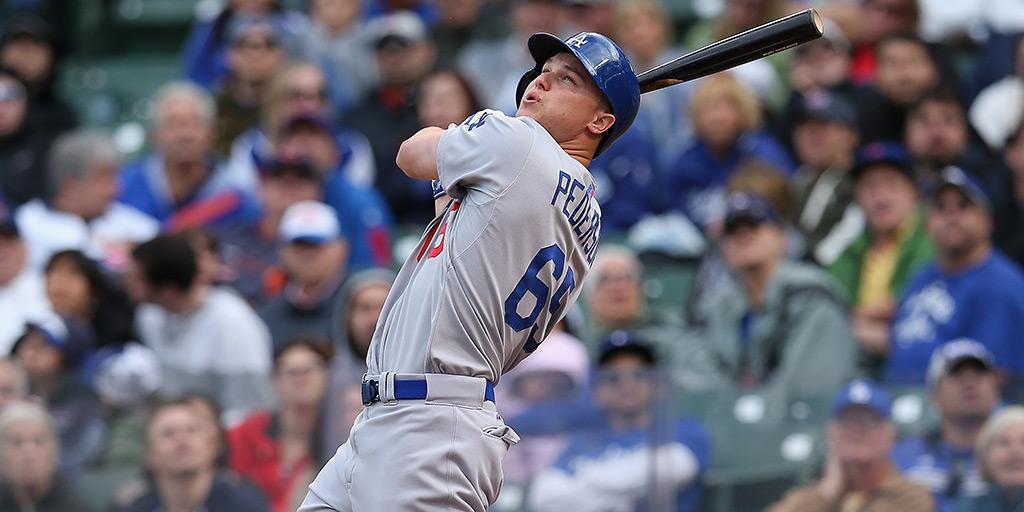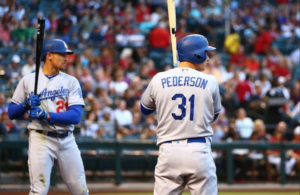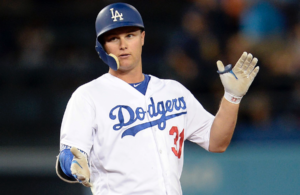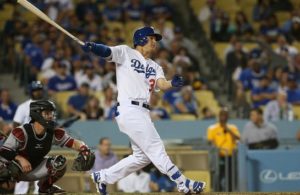Pumping The Brakes On Joc Pederson
- By Bobby DeMuro
- Updated: February 24, 2015

![Joc Pederson [Image via @truebluela]](http://www.calisportsnews.com/wp-content/uploads/2015/02/B-T9e7qIcAA6KJ4.jpg)
Joc Pederson [Image via @truebluela]
I mentioned the PCL and the California League were the two most offensively skewed full-season minor leagues in professional baseball. That’s because the most offense-favored affiliated league isn’t full-season, but short season rookie-level: the Pioneer League. Guess where Joc Pederson played in 2011?
In 68 games in Ogden, Utah, Pederson hit .353/.429/.568 with a gaudy .997 OPS, 11 home runs, 20 doubles, 24 stolen bases and 36 walks against only 54 strikeouts in 310 plate appearances. It was a great debut for him, so sincere congratulations to the 18-year old out playing the league average – again, by a wide margin – in a league where the average player was 2.1 years older than him!
But – and there’s always a but – the 2011 Pioneer League made the 2012 California League and 2014 PCL look like dead ball era baseball. League-wide, hitters slashed .278/.349/.443 with 612 home runs in 608 games, and pitchers registered an un-godly 5.08 ERA. Hell, Pederson’s team, the Ogden Raptors (who finished 6 games above .500 and made the league’s championship series!) had a 5.13 team ERA and 1.537 team WHIP. Not a lot of pitching happened in the Pioneer League in 2011. Just like he would in ’12 and ‘14, Pederson (and… everyone who picked up a bat) benefitted from that.
Pederson also played briefly at Class A Great Lakes in the Midwest League in 2011 – which is decidedly not a hitter’s league – and hit .160/.288/.160, but in just 60 PAs across 16 games.
VERDICT: Stop me if you’ve heard this before – much like 2012 and 2014, Pederson got a very favorable minor league assignment in 2011 and played in a ridiculously advantageous league for hitters. Does it mean he’s a bad player? Of course not. He still outplayed the league average by a wide margin, and did so playing against opponents several years older. But, taken together, should we be reticent about Pederson’s future after three-quarters of his minor league seasoning has been done in hitter-friendly environments? I think that’s fair.
![Pederson at a photo shoot for a baseball card, one of the parks of being a big leaguer [Image via @yungjoc650]](http://www.calisportsnews.com/wp-content/uploads/2015/02/B-KHIWJCMAAZLgi.jpg)
Pederson posing for a baseball card, a perk of being a big leaguer [Image via @yungjoc650]
Joc Pederson is a legitimate prospect who will contribute in the majors. Maybe he’ll be a perennial All Star, or maybe he will be a slightly better than average everyday big leaguer, but he will certainly get his opportunities – and make no mistake, he’s earned them. He has nothing left to prove in the minor leagues.
Even in a hitter’s park, you don’t become the first 30-30 guy in a league in eight decades without having a very unique combination of speed and power. And you don’t draw 100 walks in 553 AAA plate appearances by accident. It takes a professional, consistent approach at the plate, regardless of the elevation at which you play.
His speed and power combination certainly works in his favor; that elusive pairing of skills is held by very few big leaguers. He also draws a lot of walks. Even when he didn’t hit at all in an abbreviated September call-up, he had a 23.7% walk rate seeing Major League pitching for the first time. If his eye is that good (remember, his minor league career walk rate is 14.2%), he can help the Dodgers just by getting on base and setting the table for Adrian Gonzalez, Puig, Carl Crawford, and Howie Kendrick.
Finally, he’s young. At every single minor league stop, he’s been playing well below the average age of his competition, who has been 4.6 years older than him (Albuquerque in ’14), 3.2 years older (Chattanooga in ’13), 2.6 years older (Rancho Cucamonga in ’12), and 2.1 years older (Ogden in ’11). Pederson turns just 23 at the end of April. He has time to figure it out.
What’s Working Against Joc Pederson
Have I mentioned the favorable hitter’s leagues? Not to beat this point to death too thoroughly, but three out of his four minor league seasons have been spent in very hitter-friendly environments. It doesn’t mean he’s a bad hitter! It just means we should be a little skeptical about projecting him against big league pitching (at least, everywhere besides Coors Field).
Pederson’s 21.3% minor league strikeout rate is noteworthy, especially since it jumped at AAA to 26.9%, and that should concern you a little bit. Sure, he produced 54 extra base hits – and walked 100 times – but there must be some reticence about whether that strikeout rate will climb even further against big league hurlers. But, if he can draw walks, get on base, and hit for power, those assets could certainly offset a rising strikeout rate.
In a weird way, Puig is working against Pederson. Dodger fans haven’t forgotten that first crazy summer with Puig in 2013. Unfairly to Pederson, it will be difficult for fans and the media not to expect similar output from the next star-in-waiting, fresh off his own legendary minor league exploits.
Puig was 22 years, 178 days old when he broke in, only 45 days older than Pederson when he debuted in 2014. But Puig’s background prepared him a little differently than Palo Alto High School did for Pederson, and it’s not fair to compare them, regardless of how similar expectations may be. Pederson may turn out to be an MVP-type player as it looks like Puig is becoming, but 2015 will not be the year that sets the wheels in motion.
***
Not since Raul Mondesi in 1994 has a Dodger rookie earned a starting spot out of Spring Training. Pederson may earn a shot by Opening Day, but I expect he will see significant time in AAA Oklahoma City in 2015 (the Dodgers moved their affiliate to a less hitter-friendly city!). Yes, it was only 38 plate appearances, but last year’s big league dress rehearsal was less-than-inspiring and Pederson must prove that he can handle big league pitching on a team with very high expectations.
The Dodgers have Scott Van Slyke, Andre Ethier and Chris Heisey in addition to Puig and Crawford, so they shouldn’t hesitate to demote Pederson depending on production. Spending time in AAA this year won’t knock the shine off his prospect status. But I, for one, am skeptical about Joc Pederson sticking in the majors this quickly after a very hitter-friendly stroll through the minor leagues.
Related Posts
About Bobby DeMuro
A former college and pro baseball player, and a graduate of Davidson College and the University of North Carolina, Bobby is a host, writer, and filmmaker in Los Angeles. He misses living in North Carolina, and will be covering the Dodgers, Padres, Angels, and Major League Baseball for CaliSports News. Twitter: @BobbyDeMuro



